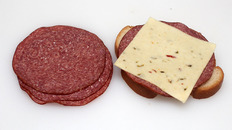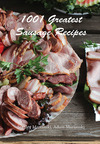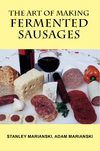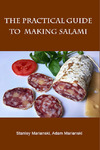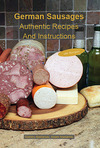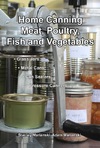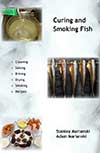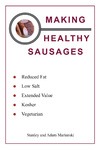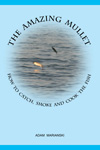Meats and Sausages
Lebanon Bologna (Traditional)
This well known American sausage has its roots in the town of Lebanon, Pennsylvania, where it was made by German settlers. Lebanon Bologna is a semi-dry, fermented, heavily smoked, all-beef sausage which is not cooked. The traditional process (no starter cultures) calls for curing beef at 4-6º C (40-43º F) for 10 days.
| Meats | Metric | US |
|---|---|---|
| beef | 1000 g | 2.20 lb. |
Ingredients per 1000g (1 kg) of meat
| salt | 28 g | 5 tsp. |
| Cure #1 | 2.5 g | ½ tsp. |
| sugar, 3% | 30 g | 6 tsp. |
| dextrose (glucose), 0.3% | 3.0 g | ½ tsp. |
| pepper | 3.0 g | 1½ tsp. |
| allspice | 2.0 g | 1 tsp. |
| cinnamon | 2.0 g | 1 tsp. |
| cloves, ground | 1.0 g | ½ tsp. |
| ginger | 0.5 g | ⅓ tsp. |
Instructions
- Curing. Grind beef with a large plate (3/4”, 20 mm), mix with salt, Cure #1 and sugar and keep for 10 days at 4-6º C (40-43º F).
- Grind cured beef through 1/8 - 3/16” (3-5 mm) plate.
- Mix ground meat with all ingredients.
- Stuff sausage mix into 40-120 mm casings. Natural beef middles, collagen or fibrous casings. The larger casings are tied and stockinetted or laced with butcher twine for support as this is a large and heavy sausage.
- Cold smoke for 4-8 days at < 22º C, 72º F, 85% humidity.
- For a drier sausage: dry at 16-12º C (60-54º F), 85-80% humidity.
- Store sausages at 10-15º C (50-59º F), < 75% humidity.
Notes
Final pH: around 4.2-4.4, water activity 0.93-0.96, it is a moist sausage but extremely stable due to its low final pH. The sausage is often left for 3 days at 4-6º C (40-43º F) for additional ripening. The sausage was traditionally cold smoked for 7 days in winter months and 4 days in the summer.

